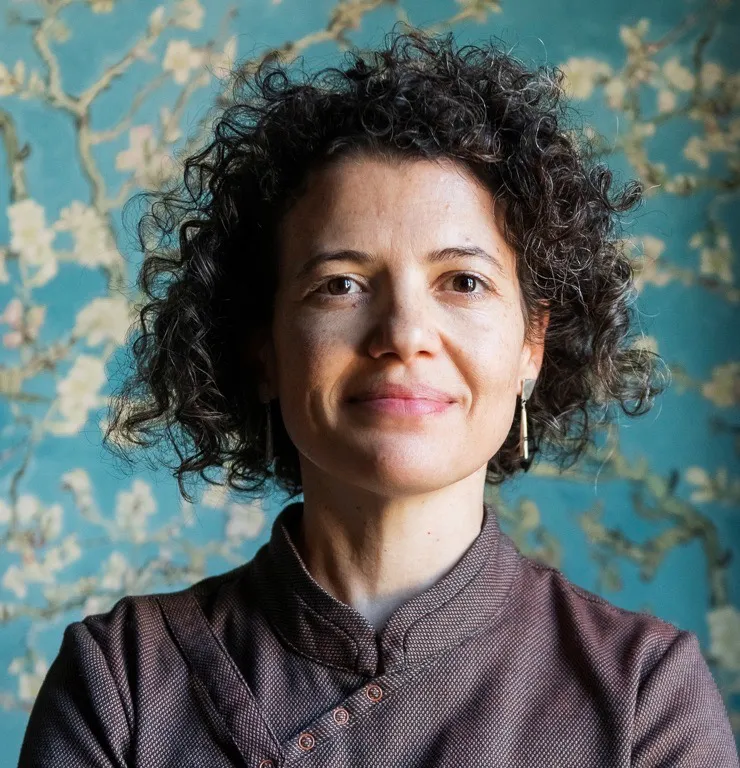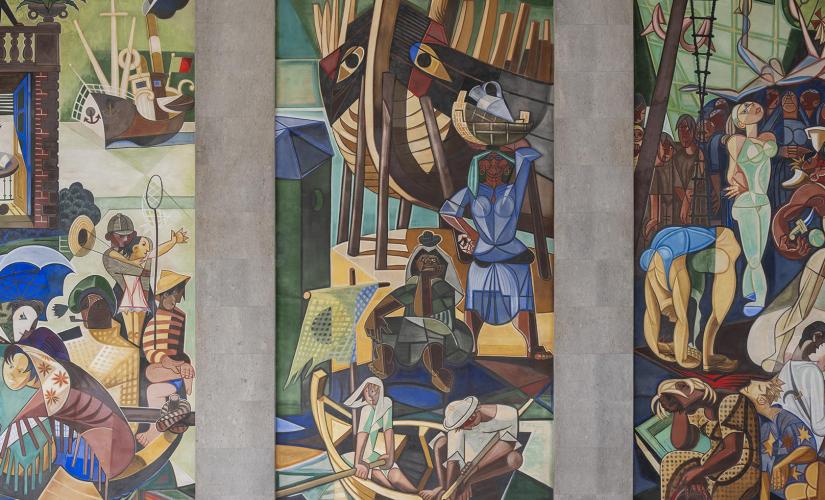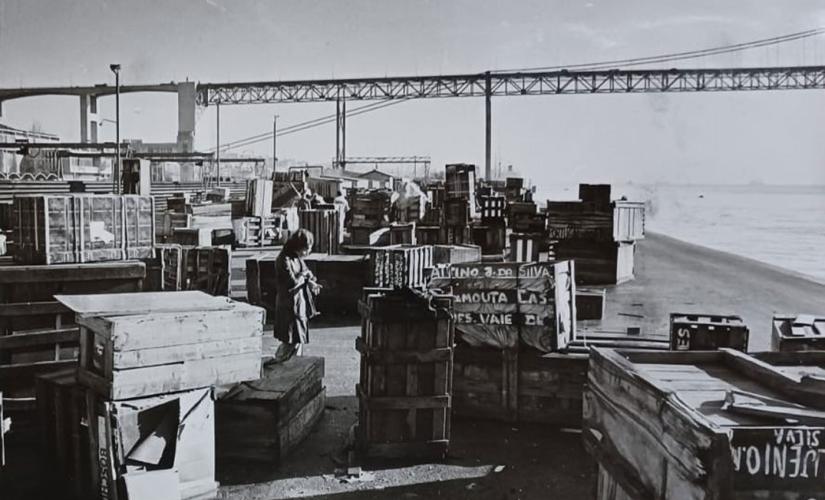
Almada murals at the Alcântara Maritime Station © Centro Interpretativo Almada Negreiros (CIAN)
The Almada Murals at the Maritime Stations Interpretation Centre was inaugurated yesterday, April 7th, at the Alcântara Maritime Station, in Lisbon, Portugal. IN2PAST is a partner through the Art History Institute (IHA, in the Portuguese acronym), the Almada Negreiros – Sarah Affonso Study and Documentation Center CEDANSA and HERCULES Laboratory. In charge of content design and scientific coordination was IHA – NOVA FCSH / IN2PAST researcher Mariana Pinto dos Santos.
The much awaited Interpretation Centre gives new meaning to the two sets of murals modernist artist José Sobral de Almada Negreiros created in the 1940s for Lisbon’s maritime stations of Alcântara and Rocha do Conde de Óbidos, the largest set of 20th-century mural painting in Portugal. The centre details the artwork, sets out the artistic and political context in which it was created, and tells some of the stories the walls of the maritime stations bore witness to over the years – stories of departures and arrivals, and of people passing through the Lisbon harbour, on their way to different places.
Almada’s work both at Alcântara and Rocha do Conde de Óbidos was unique in the context of artistic commissions for public works during the Portuguese dictatorship, since they dealt with topics such as emigration, poverty and the hard labour at the piers. The murals caused controversy, and the second set, at Rocha do Conde de Óbidos, was at one time in danger of being destroyed.
Completed in 1945, the eight mural panels in the Alcântara hall are divided into national mythology from popular tradition and a more realistic portrait of a riverside Lisbon. In the Rocha do Conde de Óbidos project, started in 1946 and finalised in 1949, Almada abandoned the narrative dependence displayed in Alcântara, treating the figures in a more geometric way and applying the colours in blocks, without gradations or three-dimensional illusion, ‘in a combination of cubism and graphic arts’, says art historian and curator Mariana Pinto dos Santos.

© Sara Charneca

© Sara Charneca
Mariana Pinto dos Santos in the first person
‘The aim was to show that Almada did not paint those themes just anywhere, but at a pivotal point in social and political events, and he was aware of this, because instead of invoking the distant past glorified in the nationalist narrative of the Estado Novo propaganda, he questioned and dialogued with his own time.’
‘The biggest challenge was to combine knowledge from different areas and about different eras. Above all, the biggest challenge was trying to show how, through these mural paintings, you can summon up a series of historical information that is very relevant to understanding the paintings themselves, and what lives and experiences, many traumatic, they witnessed.’
Read the full testimonial here.

IHA – NOVA FCSH / IN2PAST researcher Mariana Pinto dos Santos is the scientific curator of the Almada Interpretation Centre. © Rita Carmo
Thanks to the involvement of World Monuments Fund, restoration of the paintings at the Alcântara station will begin soon and visitors of the Interpretation Centre, funded by Turismo de Lisboa, will be able to see it in progress. Restoration of the murals at Rocha do Conde de Óbidos was concluded in November 2024 and can now be fully enjoyed by visitors.
In both stations, the murals are on floor 1, whereas the new Interpretation Centre is located in floor zero of the Alcântara station, with a total of nine rooms: ‘Quay’, dedicated to the construction of the stations designed for large passenger ships; ‘What the walls have to tell’, regarding the long process of mural designing displayed through varied documentation; ‘Passages’, with stories of migratory transits related to World War II; ‘Departures’, focused on the different departures the stations witnessed, namely regular passenger traffic, emigration, and related to African colonisation.
In the ‘Arrivals’ room you can get to know stories of travellers, tourists, people wanting to enter Europe, Africans who came to study at the Casa dos Estudantes do Império, or soldiers returning from the colonial war imposed by the Estado Novo regime. The ‘Mural history’ room exhibits the main moments of the history of mural painting reinterpreted by illustrator João Fazenda. Room ‘Hearsay’ is devoted to reports and interviews about Almada’s murals and testimonials of the artist.
‘Almada in Lisbon’ guides the visitor through ten places in the Portuguese capital where you can find works by Almada Negreiros; and last but not least, ‘Almada Negreiros, artist’ introduces you to key moments in the life and work of the painter.

Almada murals at the Rocha do Conde de Óbidos Maritime Station © CIAN

‘Arrivals’ room at the Almada Murals at the Maritime Stations Interpretation Centre © CIAN
2025 © IN2PAST. All rights reserved.
IN2PAST – Associate Laboratory for Research and Innovation in Heritage, Arts, Sustainability and Territory is funded by FCT – Fundação para a Ciência e a Tecnologia, I. P. under reference LA/P/0132/2020 (DOI 10.54499/LA/P/0132/2020)